Mobile App Development Proposal Template
Secure projects with a compelling and persuasive Mobile App Development Proposal Template– craft a comprehensive, innovative, and tailored pitch swiftly.
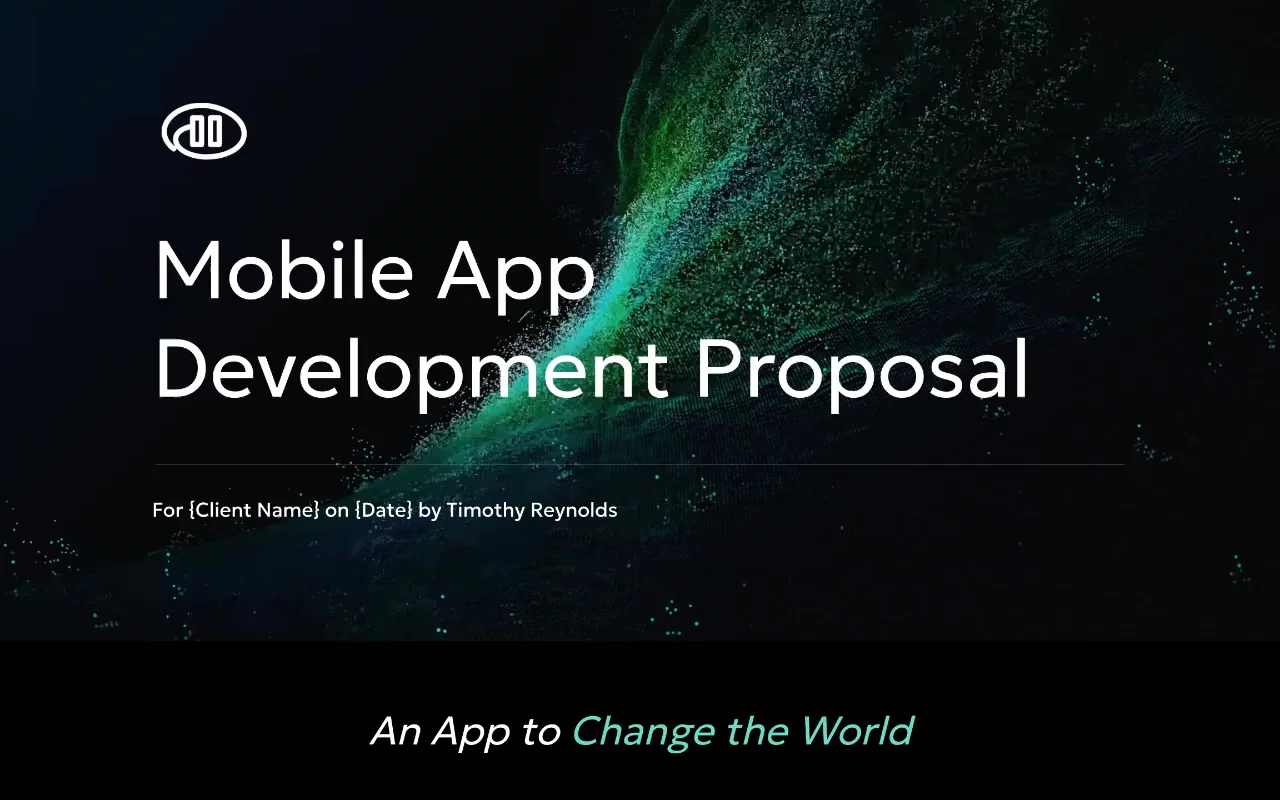
About this template
Secure projects and captivate potential clients with our interactive App Development Proposal Template. Designed for clarity and impact, this mobile application proposal template enables your team to showcase technical expertise, innovative solutions, and exceptional user experience.
Demonstrate the benefits of your app development services, including increased engagement, streamlined processes, and improved customer satisfaction, ultimately winning projects and driving business growth.
What's included?
- Executive summary
- Outline
- App components
- UX & app flow
- Timeline
- Post-launch support
- Team & roles
- Portfolio
- Investment
- Get started
Included in our app proposal template
Eye-catching cover page
First impressions count. Our mobile app development proposal template includes a professionally designed cover page that instantly signals quality. With space for your agency’s branding, project name, and client details, this section is ready to go—just update the placeholder information. You can choose to keep the existing hero image or swap out for a bespoke image or video.
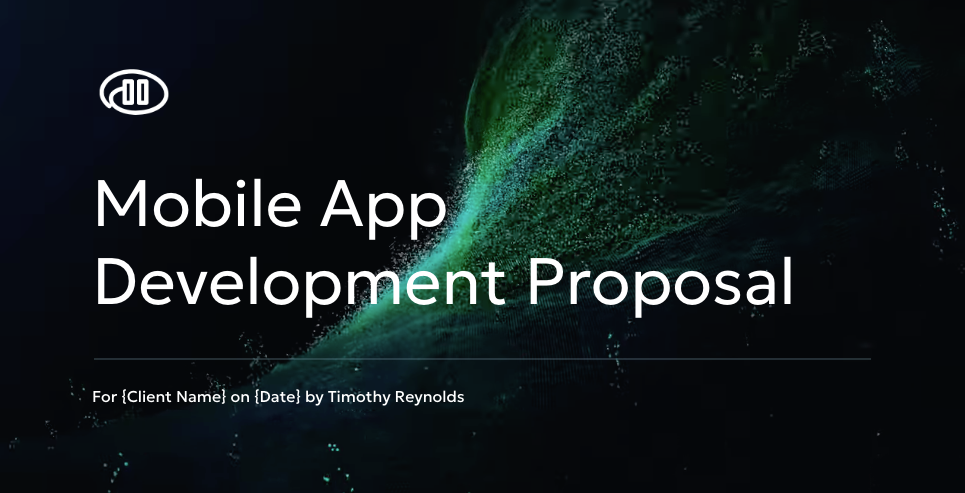
New app outline
Clients want clarity, and this section delivers. This section comes filled with a framework for describing the proposed application—its purpose, core functionality, target users, and business goals. You can customize the suggested text to match your specific client project, but the structure is already there. This not only saves time but ensures you communicate the right level of detail from the start. It’s the fastest way to show prospects that you understand their vision and are ready to bring it to life.

Application components
Explaining the technical pieces of a mobile app can be overwhelming—unless you’re using Qwilr’s mobile app development proposal template. These components are pre-written in a way that’s client-friendly, avoiding jargon while still showing your technical depth. All you need to do is adjust the details to reflect the specific scope.
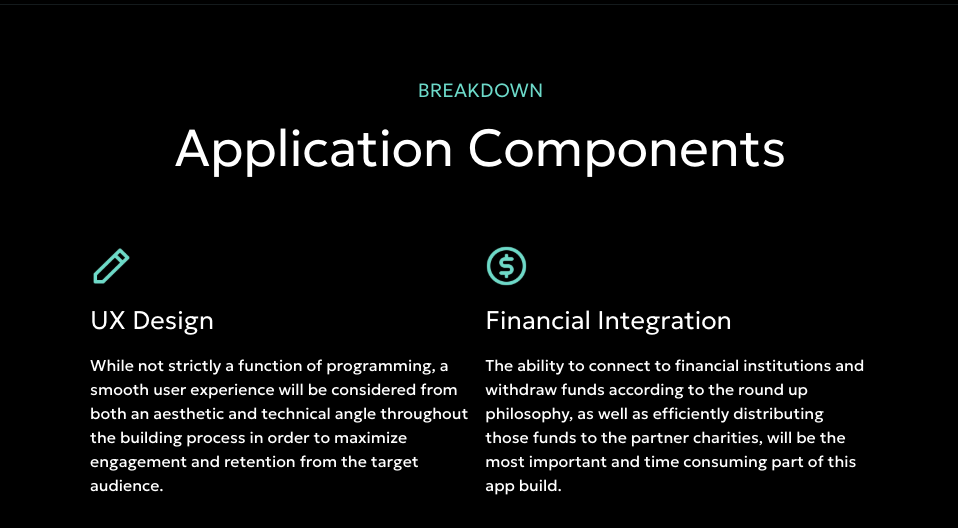
Project timeline and processes
This section outlines your approach to delivering the project—step by step. The timeline and workflow are already built into the template based on industry best practices, covering key stages like discovery, wireframing, development, testing, and launch. You can edit the milestones and dates to fit your client’s schedule, but the process is already mapped out.
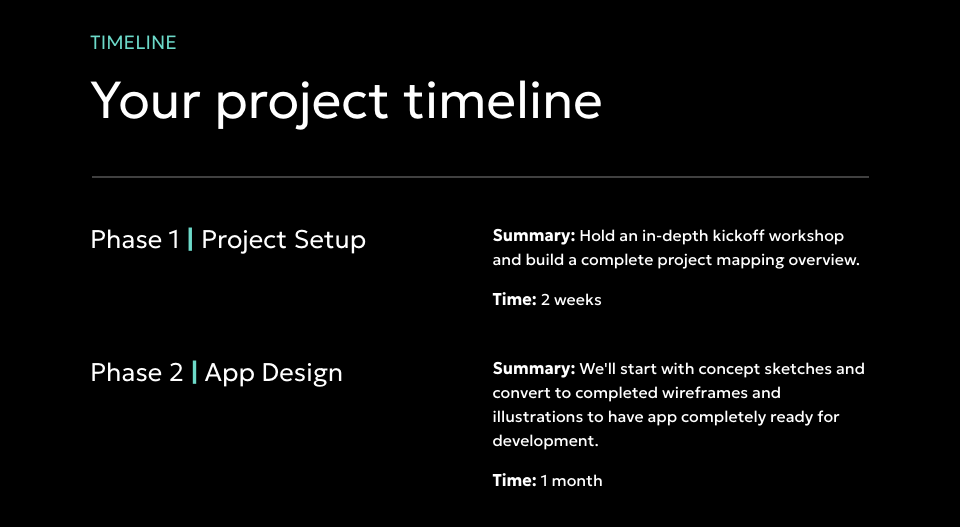
Pricing
The pricing section in our mobile app proposal template is designed to make cost presentation simple and client-friendly. It comes pre-populated with a suggested format for laying out your pricing—whether you charge by phase, feature set, or development hours. With optional interactivity, this section removes guesswork and supports faster decision-making.
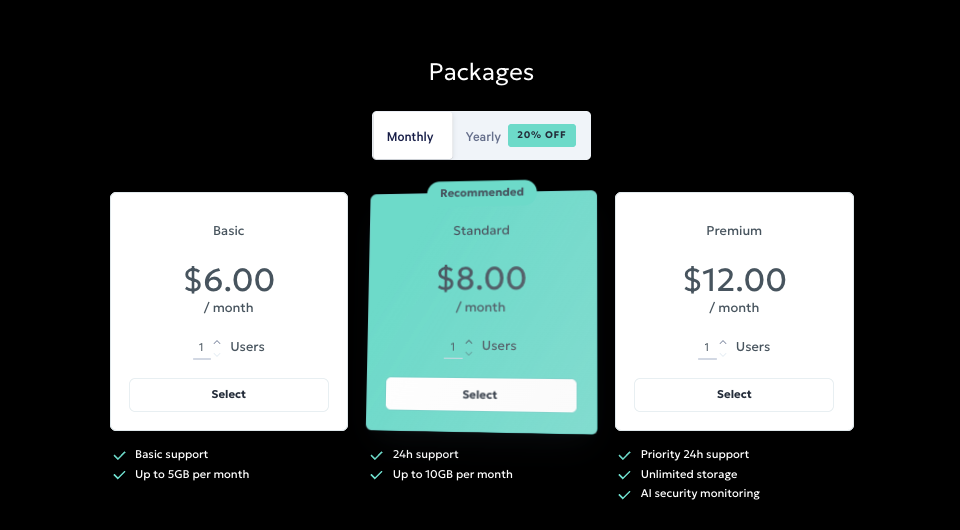
Accept block
No need to follow up with separate paperwork. The template includes a fully integrated Accept Block that transforms your app proposal into a signable agreement. This section contains ready-to-use approval language and is connected to digital signature functionality. Your clients can accept and approve the project right from the proposal page—no printing, no scanning, no delays. Simply update the contact names and you're ready to close.
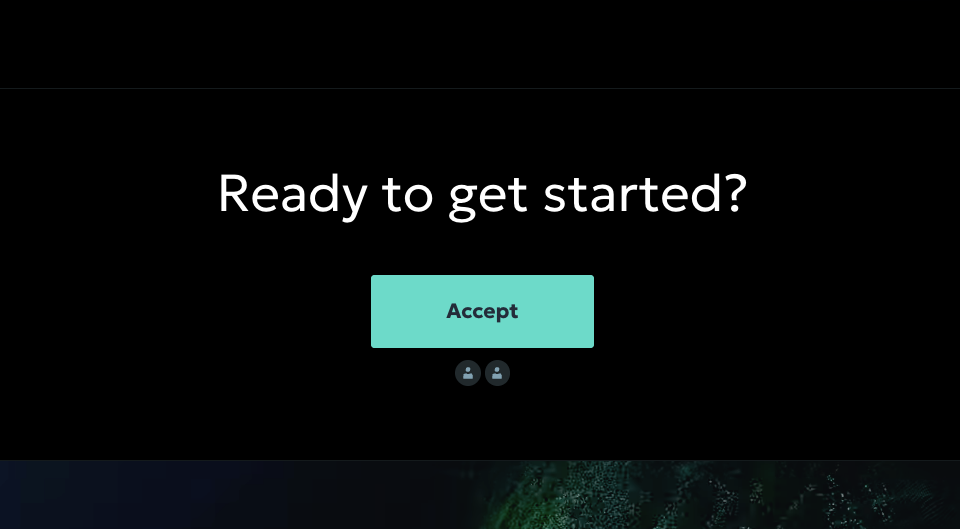
Why Qwilr?
Design interactive proposals
Impress buyers with interactive proposals that stand out. Qwilr’s drag-and-drop editor makes it easy to create on-brand, stunning collateral — no design skills needed. Add videos, dynamic pricing, and ROI calculators to deliver a unique experience, while automated brand customizations ensure every proposal looks professional.
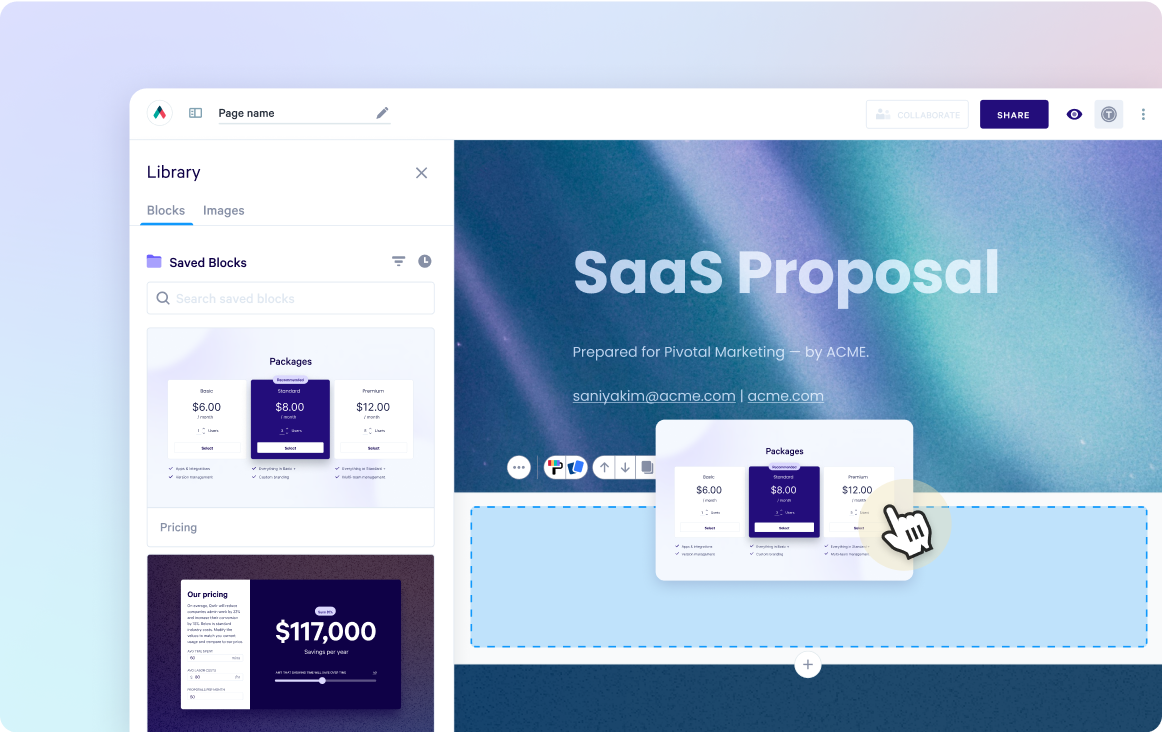
Built-in e-sign functionality
Combine stunning proposals, plain-text agreements, and secure e-signatures in one tool. Add print-friendly agreements alongside dynamic content and collect legally compliant e-signatures with ease. Track progress, capture multiple signatures, and close deals faster with Qwilr’s integrated e-sign functionality.
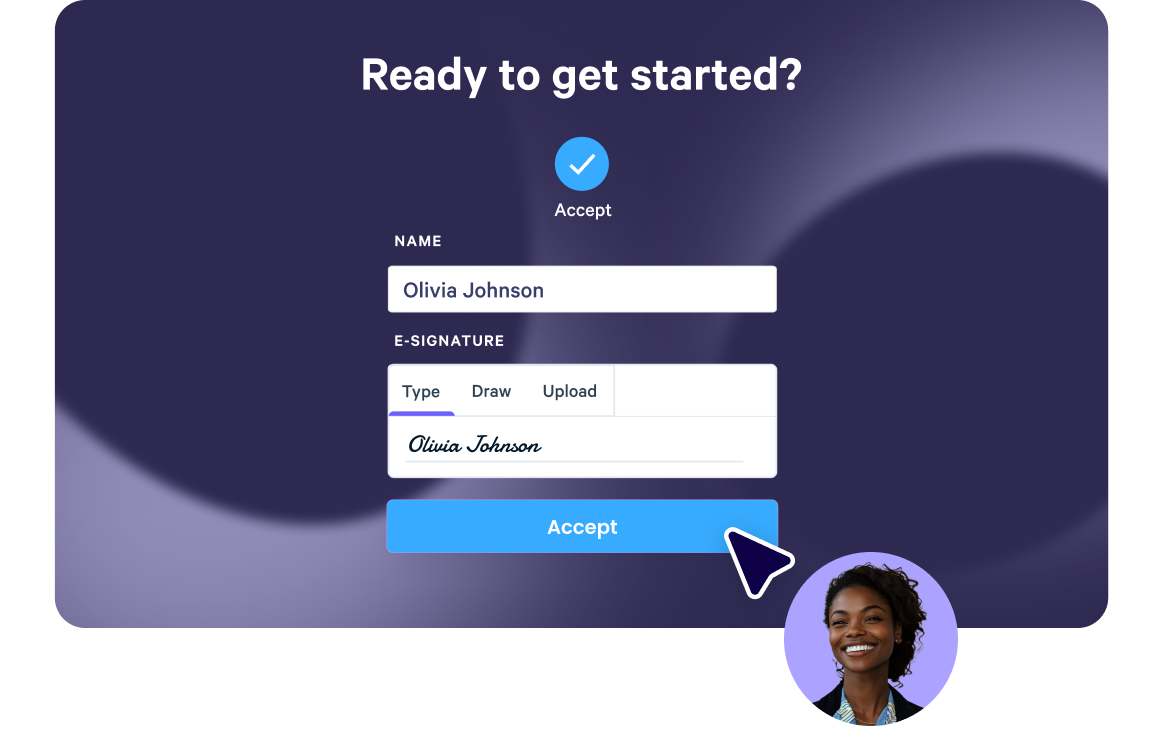
Real-time proposal analytics
Qwilr’s analytics provide full visibility into buyer engagement. Track when proposals are opened, signed, or shared, and get instant notifications for key buyer activities. See what buyers click on, how they engage, and prioritize follow-ups based on real-time insights—all designed to help close deals faster.
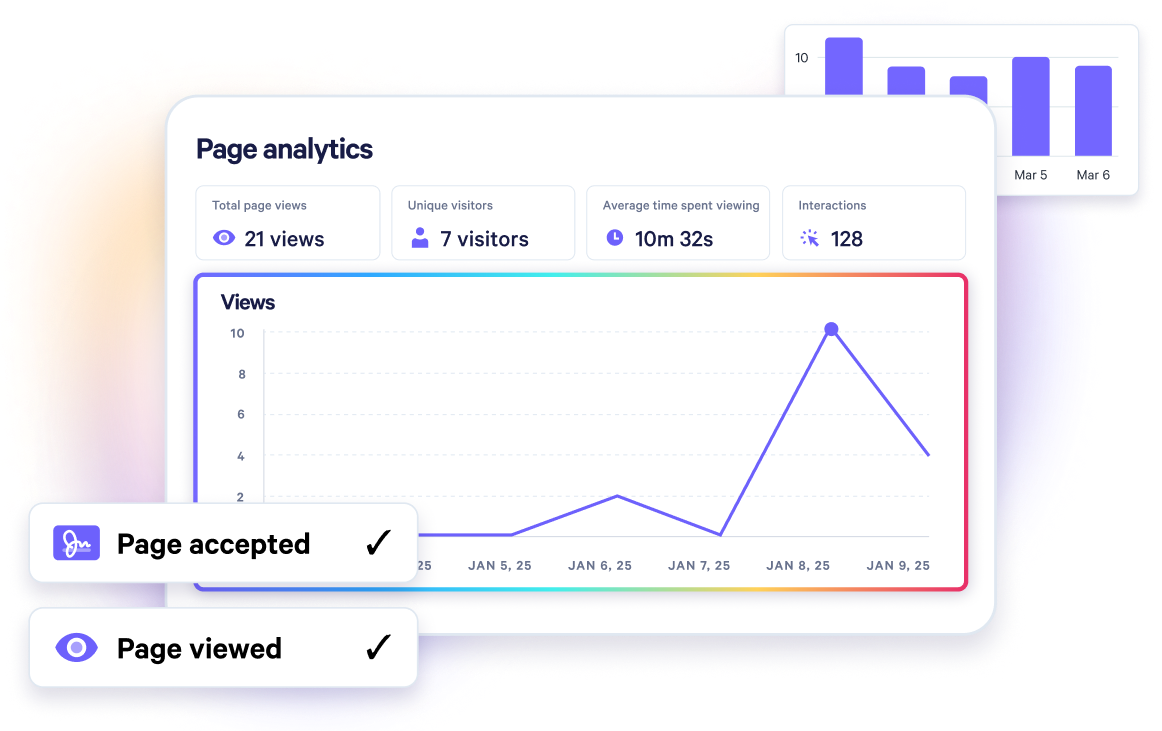
Templates for every use case
Explore templates for sales, marketing, customer success, sales enablement and more.
Explore proposal templatesFrequently asked questions
- The first step in writing a mobile application development proposal is to outline the project's scope and objectives.
- Next, you should identify the target audience and define their needs.
- The proposal should also include a detailed description of the technical requirements, such as the programming language, frameworks, and design patterns required to develop the app.
- Additionally, the proposal should contain a project timeline, budget, and roles and responsibilities of the stakeholders involved in the project.
Using a proposal creation solution like Qwilr can be a great way to streamline your proposal process.
A mobile app proposal should be structured in an easy-to-follow format that outlines the project scope, objectives, and technical requirements. It should begin with an introduction or executive summary that summarizes the project's goals.
The proposal should then provide an overview of the target audience and define their needs. The technical requirements for the app should be covered in detail, along with a project timeline and budget. Finally, the proposal should include terms and conditions, ownership rights, and any warranty or maintenance agreements.




